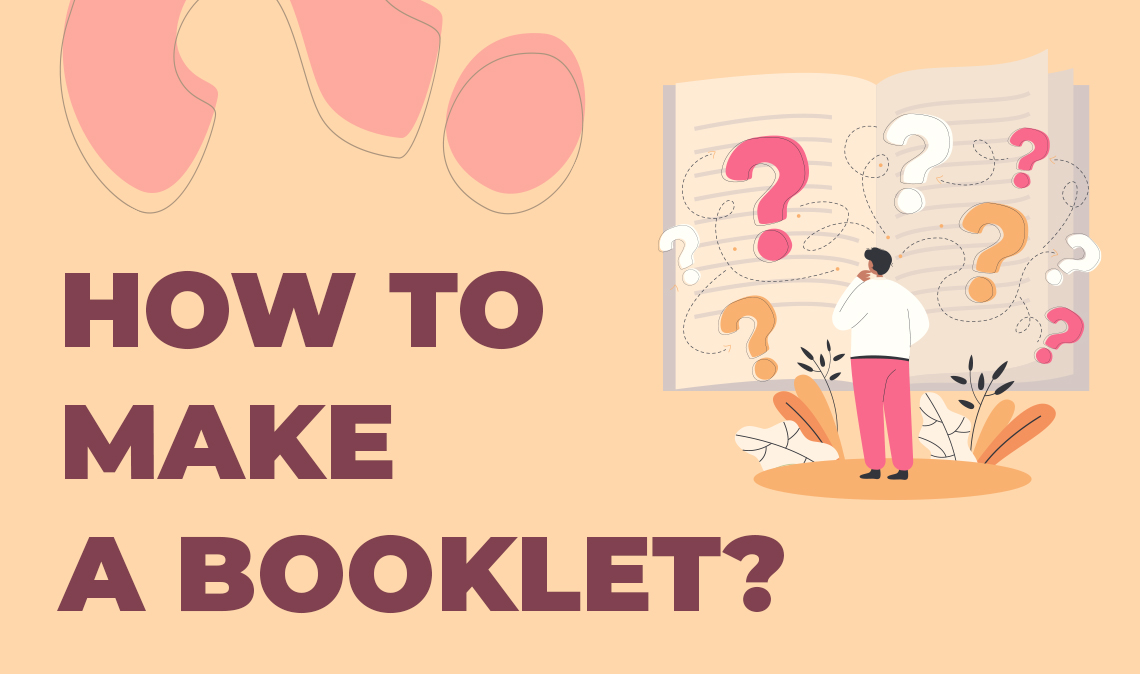
Introduction:
The art of creating a booklet goes beyond the mere arrangement of pages; it is a journey of storytelling, organization, and visual aesthetics. Whether you are designing a booklet for a business presentation, a creative project, or a personal endeavor, this comprehensive guide will walk you through the step-by-step process of making a booklet that captivates your audience and effectively communicates your message.
I. Define Your Purpose and Audience:
- Clarity of Purpose:
- Before diving into the creative process, define the purpose of your booklet. Are you presenting information, sharing a story, or promoting a product or service? This clarity will guide the content and design choices.
- Understanding Your Audience:
- Consider the demographics and interests of your target audience. Knowing your audience allows you to tailor the content and design elements to resonate with their preferences and expectations.
II. Planning Your Content:
- Organize Your Ideas:
- Create an outline or storyboard to organize your content. This helps ensure a logical flow and a cohesive narrative throughout the booklet. Break down the information into sections or chapters for easy comprehension.
- Balance Text and Visuals:
- Strike a balance between text and visuals. Incorporate images, charts, graphs, and other visual elements to complement the text and make the content more engaging. Visuals can enhance understanding and leave a lasting impression.
III. Choose the Right Format and Size:
- Selecting the Page Size:
- Choose a page size that suits your content and purpose. Common booklet sizes include A5 (5.8 x 8.3 inches) and 8.5 x 11 inches. The size should be practical for reading and handling while aligning with the overall aesthetic.
- Orientation: Landscape or Portrait:
- Decide whether your booklet will be in landscape or portrait orientation. Landscape is often preferred for visual-heavy booklets, while portrait may be more suitable for text-centric content.
IV. Creating Content Digitally:
- Utilizing Digital Tools:
- Embrace digital tools for content creation. Software like Adobe InDesign, Microsoft Word, or even online platforms like Canva provide user-friendly interfaces for designing and formatting your booklet.
- Page Layout and Formatting:
- Pay attention to page layout and formatting. Ensure consistent margins, proper alignment, and a clear hierarchy of information. Consistency in design contributes to a polished and professional look.
V. Designing a Visually Appealing Cover:
- Compelling Cover Design:
- The cover is the first impression of your booklet. Craft a visually appealing cover that reflects the essence of your content. Use high-quality images, compelling typography, and a color scheme that aligns with your theme.
- Title and Subtitle Placement:
- Strategically place the title and subtitle on the cover. Experiment with font styles and sizes to create a harmonious balance. Consider incorporating graphic elements that enhance the visual appeal.
VI. Sequential Page Numbering and Pagination:
- Sequential Page Numbering:
- Ensure that your pages are sequentially numbered. This helps readers navigate through the booklet seamlessly. Include page numbers in the header or footer for clarity.
- Pagination for Print:
- If you plan to print the booklet, be mindful of pagination. Designate the order of pages considering the folding and binding process. Verify that the page sequence aligns with the intended layout after printing.
VII. Choosing Fonts and Typography:
- Readability and Consistency:
- Prioritize readability by choosing clear and legible fonts. Opt for a consistent typography style throughout the booklet. Consider using different font weights and styles to create visual hierarchy.
- Font Pairing:
- Experiment with font pairing to add visual interest. Pair a bold headline font with a more subtle body text font for a balanced and cohesive look. Ensure that the fonts complement each other.
VIII. Incorporating Visual Elements:
- High-Quality Images:
- Use high-resolution images to enhance the visual appeal. Whether it’s photographs, illustrations, or infographics, ensure that the visuals are sharp and relevant to the content.
- Consistent Color Scheme:
- Establish a consistent color scheme that aligns with your brand or theme. Limit the number of colors to maintain a cohesive look. Use colors strategically to highlight key elements.
IX. Printing and Binding Options:
- Selecting Paper Quality:
- Choose an appropriate paper quality based on your budget and the intended purpose of the booklet. Glossy or matte finishes can impact the overall look and feel.
- Binding Options:
- Consider different binding options such as saddle-stitching, spiral binding, or perfect binding. The choice of binding influences how the booklet opens and the overall durability.
X. Proofreading and Revisions:
- Thorough Proofreading:
- Before finalizing your booklet, conduct thorough proofreading. Check for spelling and grammatical errors, ensure proper alignment, and review the overall coherence of the content.
- Gather Feedback:
- Seek feedback from peers, colleagues, or target audience members. Their insights can provide valuable perspectives and help refine the booklet before publication or distribution.
XI. Distribution and Promotion:
- Digital Distribution:
- If your booklet is digital, explore online distribution options. Platforms like Issuu, Scribd, or your own website can serve as effective channels for reaching a wider audience.
- Printed Copies:
- If printing physical copies, choose a reliable printing service. Consider distribution channels such as mailing, events, or local businesses. Utilize both online and offline avenues to promote your booklet.
Conclusion:
Creating a booklet is a dynamic process that involves careful planning, thoughtful design, and a keen eye for detail. Whether it’s a promotional tool for your business, a creative project, or a personal endeavor, the steps outlined in this comprehensive guide aim to empower you to craft a booklet that not only communicates your message effectively but also engages and captivates your audience. Embrace the journey of storytelling through your booklet, and enjoy the fulfillment that comes from sharing your narrative with the world.